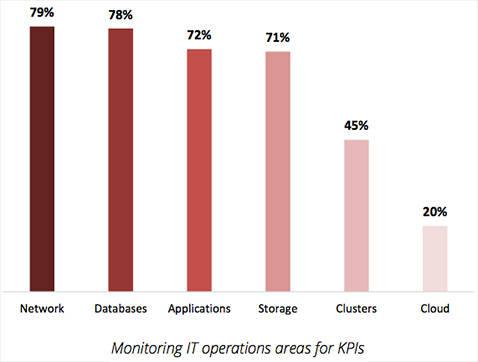Only 57% of critical IT infrastructure issues are detected before business impact
Organizations large and small are struggling to meet their Key Performance Indicator (KPI) goals and prevent IT issues before they adversely impact the business, according to Continuity Software.

Key findings include:
- Uptime is the leading KPI for IT operations, used by 89% of respondents. Fifty-one percent of respondents track uptime in real-time, while 19% track it daily.
- Organizations are least likely to monitor KPIs in the cloud environment (only 20% do so). In contrast, more than 70% of organizations monitor KPIs across their networks, databases, applications and storage.
Do organizations meet their KPI goals?
- Only 29% of respondents consistently meet or exceed their KPI goals. 46% percent of respondents meet their goals most of the time, and 13% meet some of them.
- Organizations detect and address an average of only 57% of critical IT issues before they impact the business.
- Organizations are more likely to meet their KPI goals if they frequently track configuration consistency across more IT domains.

What role do analytics tools play?
- IT Operations Analytics tools are more commonly found in large organizations. 47% of organizations with over 10,000 employees use them, compared to 32% of smaller companies.
- 76% of executives who use IT Operations Analytics find these solutions helpful or extremely helpful in early detection of IT issues.
- IT executives believe the best way to improve operations excellence is to use better tools for measurement and analysis (28%), use tools to enforce IT best practices (28%), or use tools to detect cross-domain IT configuration issues (22%).
“Although KPI tracking is becoming more and more sophisticated, the fact that less than a third of organizations are meeting their KPI goals is concerning,” said Doron Pinhas, CTO, Continuity Software. “Organizations could meet their KPI goals more consistently – and avoid critical issues – if they used better analytics tools more often and more widely, particularly in the cloud.”